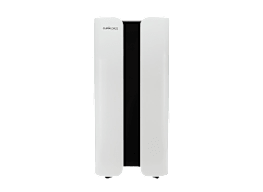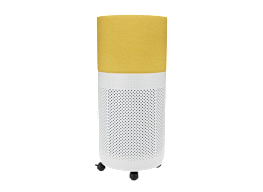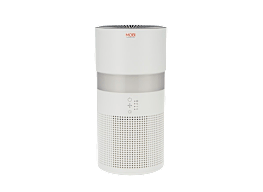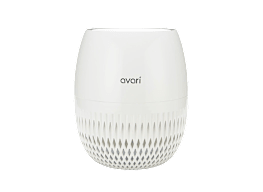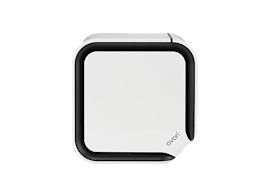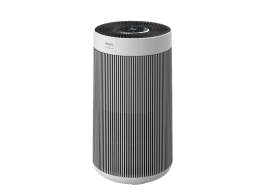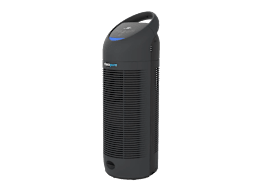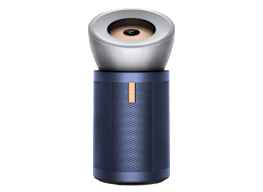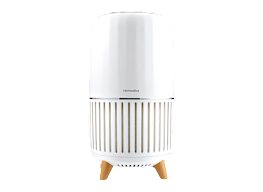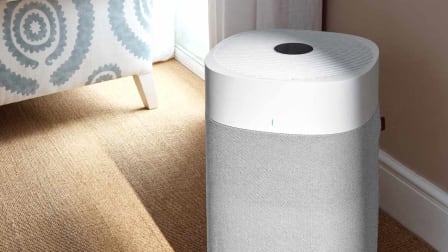What You Need to Know About Air Purifiers and the Coronavirus
One of these devices might help if someone at home is sick, but only if you use it correctly
When you shop through retailer links on our site, we may earn affiliate commissions. 100% of the fees we collect are used to support our nonprofit mission. Learn more.
Running an air purifier at home can be a good idea anytime, to help filter out indoor allergens and pollutants like fumes from cooking and cleaning products. And that's especially true now, when so many people are stuck indoors 24/7 because of the coronavirus pandemic.
But you may also be wondering if an air purifier can prevent COVID-19 by capturing virus particles that could be traveling in the air.
We spoke with air quality and virology experts, and asked CR's own experts to weigh in. The consensus is that while air purifiers probably don't offer much protection in most circumstances, they may be worthwhile in a few specific ones.
If someone in your household is sick with COVID-19, running an air purifier in their quarantine room may help protect other family members or caregivers. The same goes for healthcare workers who are self-quarantining when they come home.
How to Use an Air Purifier When a Family Member Is Sick
If you believe you or someone in your household might have COVID-19, follow the Centers for Disease Control and Prevention (CDC) guidelines for essential steps to take, which include how to monitor symptoms, when to seek medical help, and the proper way to isolate someone who's sick.
To use a HEPA purifier at home to help prevent transmission of the virus to other family members, Siegel suggests placing the unit three feet from the person who is sick with COVID-19. “We know that close contact is a main transmission route so I would rather people have an air purifier on low speed near the patient rather than farther away on super high speed,” he says.
Run it 24 hours a day on the highest setting that won’t disturb the sick person’s sleep. In addition, keep the air purifier separated from anything that can obstruct airflow, such as curtains or furniture, and keep the door to the room closed. When used correctly, the filter can potentially intercept floating virus particles before they reach a caregiver in the same room, says Siegel.
Take extra precautions when handling the air purifier and changing the HEPA filter. According to early studies, the coronavirus can live on plastic and steel, both materials air purifiers are commonly made of, for up to three days. And, Siegel says, "We don’t know yet how long the coronavirus can survive on filters."
Don’t touch the air purifier while it’s in use, and when it’s time to change the filter, put on gloves and a surgical mask if you have one, take the air purifier outside, and clean and disinfectant the exterior. Then remove the filter and dispose of it in a sealed bag. If your air purifier has a fabric prefilter, wash it.
One note about advertisements you may be seeing about using air purifiers against the coronavirus: Be wary if you see products that claim they can outright prevent COVID-19 or destroy the coronavirus.
“Some air purifiers claim to kill viruses using UV light or some kind of photocatalysis technology,” says John Galeotafiore, a director of testing at CR. “We suggest consumers take these claims with a grain of salt because there isn't enough concrete evidence yet that proves they work in these settings.”
HEPA Purifiers From CR’s Tests
Consumer Reports does not test air purifiers for virus removal, but we do perform our tests using similarly sized airborne particles as small as 0.1 micron and up to 1 micron (a range that includes dust mite allergens, cat allergens, smog, smoke, and atmospheric dust). All of CR’s top-rated models have no problems trapping particles in this spectrum.
Because air purifiers typically have several speed settings, we test for dust and smoke removal both at the highest speed and at a lower speed, and we do the same for noise. Here are seven air purifiers that have high CADRs and earn an Excellent or Very Good in our particle reduction tests while being quiet—so they should help capture viruses without disturbing a sick person’s rest.
For more information on these and other air purifiers we test, including the recommended room size for the machines below, see our air purifier buying guide and ratings. These models are listed in alphabetical order.
The Alen BreatheSmart Classic is an air purifier made for large rooms, but this sleek model can clean the air quietly and even more quickly when used in a small room, like a bedroom. It scores an Excellent rating in our particle reduction test at high speed and a Very Good rating on its lower speed. Both speeds earn Good ratings for noise, meaning you should be able to carry on a conversation in the room.
This Blueair Blue Pure 211+ scores Excellent ratings in both our high-speed and low-speed particle reduction tests—one of only two models to do so (the other one is the Blueair below). This air purifier is relatively quiet on its lower setting, garnering a Good for noise, but is a little loud on its highest speed setting.
While Blueair Classic 605’s cleaning ability is more than most people need in a bedroom, it’s the best and fastest air purifier we test, garnering Excellent ratings in both our high-speed and low-speed particle reduction tests. It’s the only model we test that earns a Very Good noise rating on its low speed while still getting superb cleaning results (at its highest speed, this model is quite noisy, though).
In our particle-reduction tests, the Honeywell HPA300’s air purifier scores Excellent and Very Good ratings at its highest speed and lower speed, respectively. For noise, it’s rated Good at any speed.
In our tests, the SPT AC-2102 air purifier’s high-speed setting earns an Excellent rating for removing particles from the air, but it’s pretty noisy, garnering a Fair rating in that test. You can use it on a lower, quieter speed setting, though, which still earns a Very Good rating for particle removal.
At high speed, this Winix 5300-2 scores an Excellent in our particle reduction test and earns a Very Good rating for noise, the only model to do so at its high-speed setting. It’s also the least expensive model on this list. We recommend operating it only at high speed because this Winix doesn’t perform particularly well for removing particles at low speed.
Similar to the Winix 5300-2 above, we only recommend running this FresHome WACP450 on its highest speed setting, which earns an Excellent rating in our particle reduction test while scoring a Good for noise (still fairly quiet). Its efficiency for removing particles drops notably on its lower speed settings.
Editor's Note: This article has been updated to clarify the particle sizes that HEPA filters can capture and explain how the filters capture such particles.

















